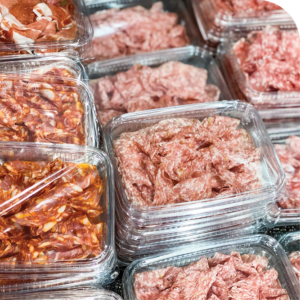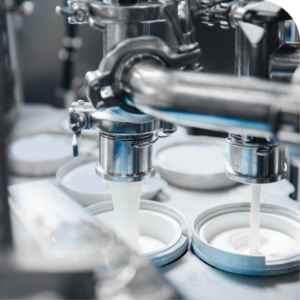Food safety begins in the air we breathe. Ambient air in food processing facilities—often overlooked—is a significant source of microbial contamination. As the author aptly highlights in his article, Hydroxyl Radicals for a Radical Advantage in Food Processing Hygiene, A Survey of Biocides Used by the Food Industry “ambient air is the largest food contact surface in the food processing industry” and can contribute to serious foodborne risks if not properly managed.
 Hydroxyl radicals, often called the “detergent of the atmosphere,” are naturally occurring molecules that eliminate pollutants and pathogens in outdoor air. Keener explains how advancements in technology now allow food processors to bring the power of hydroxyl radicals indoors to improve hygiene standards safely and effectively.
Hydroxyl radicals, often called the “detergent of the atmosphere,” are naturally occurring molecules that eliminate pollutants and pathogens in outdoor air. Keener explains how advancements in technology now allow food processors to bring the power of hydroxyl radicals indoors to improve hygiene standards safely and effectively.
“Recent lab-based and real-world case studies have shown that the use of hydroxyl radicals, at the appropriate concentration, offers a proven, highly effective, safe, and scalable approach to food plant hygiene and food safety,” Keener writes. UV light reacts with water vapor, producing these radicals and turning the surrounding air into an active cleaning agent. These natural cleaning agents seek out the microorganisms that cause food processors problems (listeria, e. Coli, Salmonella, and more) and remove hydrogen, which causes the cell itself to die. See Pyure’s lab-based and real-world case studies.
Unlike traditional biocides such as chlorine dioxide or ozone, hydroxyl radicals are safe for use in occupied spaces and do not require costly shutdowns or personal protective equipment. Another advantage is they work continuously and not solely at one point in time, offering ongoing protection against airborne and surface microorganisms, spoilage organisms, and pathogens.
 Airborne contamination has long been recognized as a critical yet often underestimated risk in food processing facilities. As Larry Keener highlights in his article, studies dating back to 1986, including the FDA’s Dairy Products Initiatives Preliminary Status Report, revealed that “airborne contamination is strongly suspected as the cause of some pathogenic contamination” and called for comprehensive assessments of air supply systems.* Over the years, researchers have consistently found viable Listeria monocytogenes and other pathogens in the air within production facilities, posing significant risks to ready-to-eat (RTE) food manufacturers. Keener also recounts a real-world case where contaminated air handling systems caused spoilage in jam and jelly production due to airborne mold. More recently, the FDA’s 2024 report on leafy greens identified airborne transmission as a cause of Shiga toxin-producing Escherichia coli (STEC) contamination, demonstrating that bacteria can survive in the air and travel via dust to food products. With the ability of airborne microbes like Salmonella, E. coli, and Listeria to thrive in food plant environments, addressing air hygiene is crucial for protecting both product quality and public health.
Airborne contamination has long been recognized as a critical yet often underestimated risk in food processing facilities. As Larry Keener highlights in his article, studies dating back to 1986, including the FDA’s Dairy Products Initiatives Preliminary Status Report, revealed that “airborne contamination is strongly suspected as the cause of some pathogenic contamination” and called for comprehensive assessments of air supply systems.* Over the years, researchers have consistently found viable Listeria monocytogenes and other pathogens in the air within production facilities, posing significant risks to ready-to-eat (RTE) food manufacturers. Keener also recounts a real-world case where contaminated air handling systems caused spoilage in jam and jelly production due to airborne mold. More recently, the FDA’s 2024 report on leafy greens identified airborne transmission as a cause of Shiga toxin-producing Escherichia coli (STEC) contamination, demonstrating that bacteria can survive in the air and travel via dust to food products. With the ability of airborne microbes like Salmonella, E. coli, and Listeria to thrive in food plant environments, addressing air hygiene is crucial for protecting both product quality and public health.
Keener references the groundbreaking study published in the Journal of the Air & Waste Management Association (Crosley et al., 2017), which demonstrated the efficacy of Pyure’s unique UV-generated hydroxyl radicals in reducing pathogens on air and surfaces. Another study published in the prestigious ASHRAE Journal (Khankari et al., 2024) confirms that computational fluid dynamics analysis supports Pyure’s hydroxyl technology’s capability to reduce pathogen risks indoors.
These findings demonstrate the transformative potential of hydroxyl radicals in food processing. As Keener notes, the benefits extend beyond hygiene, with “a net overall reduction of biological contamination within the entire production operation” and improved productivity by mitigating downtime caused by traditional sanitation cycles.
For food safety and quality professionals, integrating hydroxyls into environmental hygiene programs could be an additional step in safeguarding products, protecting consumers, and enhancing operational efficiency. As Keener concludes, hydroxyl radicals offer “a unique and valuable addition to the food industry’s methods of minimizing pathogens in air and on surfaces.”
Explore the original article or contact us for a consultation to learn more about the proven science behind hydroxyl radicals and how Pyure’s hydroxyl technology can elevate food safety protocols.
Original Article